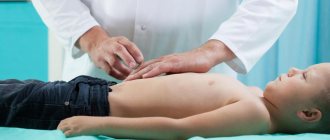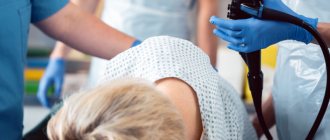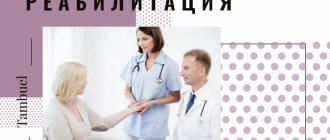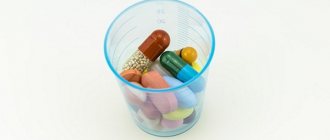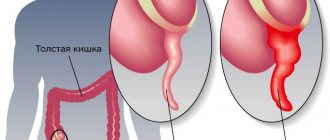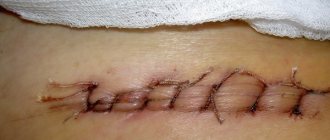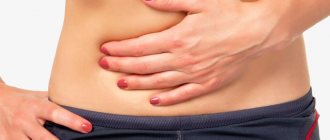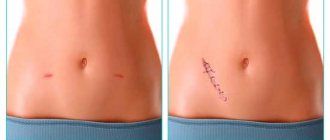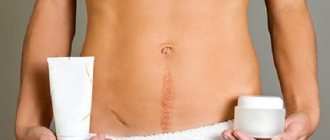Swimming is one of the best forms of exercise for children because, by providing a good workout for the muscles, water significantly reduces the stress on joints and ligaments and limits the overall stress in the body that occurs during physical activity. However, if surgical treatment is planned, the timing of return to swimming will depend on a combination of many factors.
When can a child or adult start going to the pool after surgery?
The safe timing of the start of active physical activity after surgery will be determined by the attending physician, depending on the nature and extent of the operation performed. In the case of operations affecting only the skin and subcutaneous tissue, the timing of restrictions on visiting the pool is associated only with the healing of the surgical suture. In operations on internal organs, blood vessels, bones and joints, the timing depends not only on the condition of external postoperative wounds, but also on the restoration of functions affected during surgical interventions.
At the same time, swimming itself is an excellent form of physical activity for the prevention of postoperative muscle atrophy, which can be observed in children with limited mobility after surgery for a long time.
MAIN RISKS WHEN SWIMMING AND BATHING IN THE POSTOPERATIVE PERIOD
Clinicians' concerns about bathing or swimming a patient after surgery primarily relate to the potential for wound infection. The risk of infection depends on the stage of wound healing, concomitant diseases, the type of reservoir and the quality of the water in it. The maximum risk of infection is observed when swimming up to 10 days after surgery in open freshwater bodies and in public pools.
The second risk factor when swimming in the postoperative period is the possibility of sutures coming apart from stress or sudden movements. The time frame for the formation of a durable postoperative scar varies depending on the tissue from 7-10 days (skin) to 21-28 days (soft tissue). In the case of operations on cartilage, ligaments, tendons, and maxillofacial operations, the healing time increases to 40-50 days. The period of abstinence from swimming also depends on the type of suture material used. When using non-absorbable suture material, it is safe to begin exercise in water only 10 days after removal of the sutures. This time is necessary for complete healing of micro-wounds from sutures.
When using self-absorbing sutures made of catgut or analogues of synthetic materials, their strength may be reduced by exposure to water and chemicals dissolved in it. For catgut, the critical period for maintaining strength is 7-10 days, for threads made from polyglycaprone - 18-21 days, from polydiaxanone - 40-50 days. When using self-absorbing sutures for operations on ligaments, cartilage and fascia, immersion in water can begin only after the tissues have completely restored their original strength - this is observed up to three months after the operation.
Another important factor is limitation of functions and pain. Return to swimming is possible only after significant restoration of temporarily lost functions and reduction of pain. Before this, aquatherapy classes are possible as prescribed by a doctor, which will help you recover faster after surgery and reduce the severity of pain.
When and how can you take a shower or bath after appendicitis?
Recovery of the body depends on many factors, including bathing. Patients may become irritated by a temporary ban on taking a shower or bath. Since there were no such problems before and it is not easy to get used to restrictions of this kind.
As mentioned above, surgical wounds must remain dry for a certain period of time. But, after 15-20 days, you can gradually increase comfort while maintaining hygiene.
You should start with a light shower. At the same time, you should not rub too hard so as not to disturb the structure of the scar tissue. Two or three weeks after surgery, you are allowed to take a bath. As for the water temperature, why use too hot water when you can wash with warm water without complications.
WHEN CAN YOU START SWIMMING AFTER SURGERY?
- You can return to swimming when the attending physician, surgeon, family doctor, or physical therapist have confirmed that swimming is safe for the operated child.
- You can start swimming only when the postoperative wound has completely healed and is no longer painful.
- A safe start to swimming is possible 10 days after the sutures have been removed or the sutures have dissolved (in the case of using self-absorbable threads).
- If your child is wearing a cast or external fixation device, swimming should not occur until the surgeon says it is safe to do so.
Maintaining hygiene after surgery, features of the process
Many surgical wounds, which is important to know, should not be urinated with water for the first time - the doctor or surgeon who is responsible for the treatment knows this. Also, if the surgeon has allowed bathing, then after such procedures it is worth carefully treating the wound. But it is important to know this in advance in order to eliminate mistakes.
After discharge, the first thing you should pay attention to is caring for the suture. It is important to do it right:
- mechanical treatment of the seam using antiseptic agents.
- diet;
- elimination of heaviness;
- correct wearing of the bandage.
Those who have undergone surgery are wondering whether it is possible to take a shower or bath after appendectomy during the rehabilitation period. At first, doctors do not recommend washing the seam. It is better to treat it with antiseptic agents.
After discharge, you can wash the suture from above using a light solution of potassium permanganate. This is done about 3 times throughout the day. In addition to potassium permanganate, you can use the following drugs that do not irritate the wound and do not dry it out much.
- 3% hydrogen peroxide solution.
- Fukortsin.
- Iodine solution.
- Castellani liquid.
- Using brilliant green gives good results.
- Furacilin solution.
LIMITATIONS AFTER SPECIFIC TYPES OF OPERATIONAL INTERVENTIONS
Different surgeries will require a longer or shorter recovery time. For example, after surgery on the knee joint, at least 3 months must pass before the risk from swimming decreases to an acceptable level.
Likewise, swimming after cosmetic surgery can stretch fresh scars and impair the aesthetic results of the treatment.
Restrictions after abdominal operations are also associated with the fact that immersion of the body in water and physical activity lead to an increase in blood pressure, which can provoke internal bleeding. Usually, after abdominal surgery, you need to wait at least 6-8 weeks before starting swimming lessons.
After an appendectomy, it is recommended to wait about 2 weeks before swimming.
After ophthalmological operations, a pause of at least 4 weeks is required. Also, when swimming in this case, you will need to wear protective glasses.
After hip surgery, it is recommended to wait 8 to 12 weeks before swimming.
When performing cardiac bypass surgery, you must wait at least 9 months before starting physical activity.
General recommendations for rehabilitation
The early period of rehabilitation after abdominal surgery takes place in a hospital-hotel under the supervision of a medical doctor. During the first few hours, the residual effect of anesthesia appears in the body, to which is added emotional stress and pain in the area of the surgical wound. In addition, the patient exhibits symptoms of hypokinesia: the respiratory organs work with impaired function. To make all these unpleasant symptoms disappear faster, doctors recommend the following:
- After abdominal surgery, the position in bed should be slightly elevated. Be sure to observe strict bed rest until your doctor allows you to break it.
- However, even with strict bed rest, everything should be done to avoid bedsores. For this, moderate regular movements, massage of the chest and limbs are recommended.
- It is imperative to monitor the hygienic condition of the surgical suture, as well as monitor the slightest negative changes in both pain and general condition.
- The nutrition process after abdominal surgery should be carried out only according to the scheme indicated by the doctor.
In the first few days after surgery, it is necessary to monitor the results of blood and urine tests and measure the temperature. If there is even the slightest sign of intoxication (fever, thought disorder, lack of coordination), then the patient requires urgent medical attention.
Suture healing after abdominal surgery
Rehabilitation after abdominal surgery is largely related to how quickly and well the postoperative suture heals. The speed of healing is influenced by the following factors:
- patient's age;
- immune status;
- body mass;
- blood supply to tissues that were damaged during surgery.
It is also important during the entire healing process of the postoperative wound to ensure that it is not infected.
For example: after surgery to remove the appendix, the suture heals for at least a week. And if an extensive laparotomy operation was performed, then healing will take at least 2 weeks. Wounds heal fastest after laparoscopic surgery.
Recommendations for rehabilitation at home:
- The post-operative wound will be covered with a bandage for the first weeks, and the wound will also be treated by a nurse with special products to speed up healing. This dressing should not get wet, so when going into the shower (bath is not recommended), you should use a waterproof patch.
- It is necessary to regularly do moderate physical exercise: this increases blood supply to the suture area, and thus speeds up healing. But high physical activity is strictly prohibited.
- If the bandage on the seam becomes dirty or torn, it must be replaced as quickly as possible (this can only be done by a nurse).
Pneumococcal infection: symptoms, prevention
Leptospirosis: symptoms and vaccination
Vaccination to prevent pneumococcal infection
Tetanus: why vaccination is needed
Vaccination against tick-borne encephalitis in Yeysk
Vaccination in Yeysk: Anti-Rhesus immunoglobulin against Rh-conflict
Vaccination in Yeysk: vaccination against hepatitis C
Flu 2022: symptoms, type, prevention
Vaccine against drugs invented
11 myths about vaccinations
CARE OF SURGICAL SUTURE WHEN BATHING
In all cases, the postoperative suture area must be kept clean. To do this, you must avoid swimming in open fresh water, or use a sealed, waterproof sticker bandage. After swimming, the incision area should be washed with clean water and soap to prevent secondary infection.
Wet swimwear must be removed immediately after swimming. The seam must be thoroughly dried with a clean towel or disposable absorbent wipes.
If swimming in open water or a pool without a waterproof bandage, apply sunscreen to the seam area.
When resuming swimming lessons, overload should be avoided: training should begin gradually, giving the child time to rest.
How to wash properly after appendicitis surgery
If the doctor, after a while, after the operation, allowed him to take water procedures. It is important to maintain safety and accuracy.
Procedure
Before swimming, it is important to carefully remove the bandage and all patches. Since the patient initially needs help and increased safety when moving around the house. In such cases, they turn to relatives or friends for help, so that they can help get into the shower and also get out of it, especially if the body is weakened.
In the shower, you need to stand under a warm stream of water or simply wet the wound, watering it. It is important to ensure that the incision site does not get wet.
It is not recommended to use direct water jets on the wound. You need to stand on the opposite side - with your back to the source of water, this is more comfortable and there will be no sensations of pain.
Care must be taken to avoid damaging the healing wound.
- It is important to keep the wound dry after taking a bath or shower.
- Use only clean water (excluding the ingress of microorganisms, including staphylococcus).
- It is recommended to use a washcloth or soft cloth when bathing.
- It is important to regularly appear for examination by a specialist who monitors the rehabilitation period.
- If the surgeon allows you to use soap, it is not recommended to apply it directly to the incision site.
After bathing, it is important to treat the wound, and after it you can wrap yourself in a warm towel or put on a soft robe.
Symptoms of appendicitis
- Severe and sharp pain in the abdomen, which is localized in the lower abdomen on the right side closer to the groin area - that is where the appendix is located (in the lower intestine). The pain syndrome, however, can spread throughout the entire abdominal cavity.
- High temperature, fever;
- Bloating;
- Nausea;
- No appetite.
Before surgery to remove appendicitis, it is not recommended to apply a heating pad or heat to the abdomen, or take strong painkillers. You can apply cold to the right side of the abdomen, bed rest is recommended.
Recommendations for patients
To increase comfort while taking a shower, you can use a chair that is pre-installed in the shower. It is easier to wash in a sitting position, since you do not need to waste energy maintaining balance.
It is worth remembering that with intensive wound healing, slight discomfort occurs, especially when drying, after taking a bath or shower - numbness or burning occurs. The healing area is constantly itching and tightening.
To prevent colds from appearing as a postoperative complication, it is important to follow clear conditions for care after surgery. Inflammation often appears when the patient’s immunity is weakened. Therefore, it is better for operated people, especially children, to take care of their health in a timely manner.
There is a danger when using cold water. It is forbidden to do this. With a sharp cooling of scar tissue at the site of its growth. There is a risk of inflammation or associated diseases.
Types of scars after appendicitis removal
We all experience the period of skin restoration and the scarring process differently - this directly depends on the regenerative characteristics of the body. Therefore, the mark from the operation looks different for everyone.
- Normotrophic - flat, almost invisible, white in color, visually similar to a strip. Such a scar is an ideal outcome of surgical intervention and does not require correction.
- Hypertrophic - forms a thick and hard scar. Difficult to remove. It is recommended to use the gel or ointment for a long period.
- Atrophic - characterized by retraction into the skin. In order to eliminate such a scar, it is necessary to destroy the deformed collagen fibers in the deep layers of the skin. This can be done with the help of special cosmetics and injections.
- Keloid is the most unpleasant scar of all. Rough, dense, red or bluish in color. Brings itching, burning, a feeling of tightness and discomfort. It tends to grow over several years and significantly exceed the original size of the wound. To combat such a scar, physiotherapy with medicinal solutions, laser resurfacing, hormone injections and anti-scar gels are effective.
WHEN IS TREATMENT FOR APPENDICITIS REQUIRED?
Acute appendicitis requires immediate surgical treatment. Symptoms of appendicitis are severe pain in the right iliac region of the abdomen. Sometimes pain can be localized to other areas, making diagnosis difficult. In some cases, vomiting and fever are observed. Delay in surgery may lead to the development of peritonitis. Fortunately, modern surgery to remove the appendix allows you to avoid dangerous pathologies. In addition, endoscopic appendectomy leaves virtually no marks on the anterior abdominal wall, i.e., on the abdomen.
Surgery to remove appendicitis is a way to solve the problem once and for all.
Advantages of treating appendicitis at the Pirogov Clinic
- a team of experienced surgeons and doctors of the highest category;
- positive feedback from patients regarding appendicitis removal;
- performing operations using modern minimally invasive techniques that significantly speed up recovery and provide a good aesthetic effect;
- reasonable prices for surgery to remove appendicitis;
- own laboratory: test results - quickly and with a guarantee of reliability;
- equipping operating rooms with the most advanced medical equipment from leading Western companies;
- attentive and responsible medical staff: a team of anesthesiologists, resuscitators, assistants and nurses coordinately and quickly resolves any issues around the clock;
- the highest standards of equipment sterility and patient safety, meeting the requirements of regulatory authorities;
- use of the latest generation of anesthesia that does not cause any discomfort after the intervention;
- modern comfortable rooms: you feel like you are in a European hotel room;
- quick return to normal life: as a rule, patients are discharged the very next day after the intervention;
- for patients from other cities - organizational assistance from a curator at all stages of treatment;
- online consultations with surgeons.
If you have symptoms of appendicitis, do not waste time!
Make an appointment
